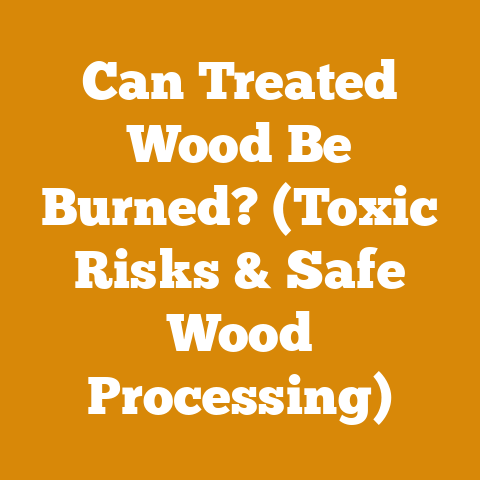Stihl MS180 Chainsaw Chain Guide (5 Expert Tips for Optimal Cuts)
Expert Picks: Mastering Your Stihl MS180 Chainsaw Chain for Optimal Cuts
Alright folks, let’s talk chainsaws.
Not just any chainsaw, but the ever-reliable Stihl MS180.
I’ve spent countless hours in the woods, felling trees, bucking logs, and prepping firewood, and the MS180 has been a trusted companion.
But even the best tool is only as good as its maintenance, and the chain is the heart of your chainsaw’s performance.
Key Takeaways:
Before we dive deep, here’s what I’m going to cover in this guide to help you get the most out of your Stihl MS180 chainsaw chain:
- Understanding Chain Types: Learn the differences between various chain types and how to choose the right one for your specific needs.
- Sharpening Like a Pro: Master the art of chainsaw chain sharpening with detailed, step-by-step instructions.
- Tensioning for Safety and Efficiency: Discover the proper chain tensioning techniques to ensure safe operation and optimal cutting performance.
- Lubrication is Key: Understand the importance of proper chain lubrication and how to select the right oil for your chainsaw.
- Troubleshooting Common Issues: Identify and address common problems that can affect your chainsaw chain’s performance.
My Journey with the Stihl MS180: A Tale of Firewood and Felling
I remember the first time I really put my MS180 to the test.
It was a brutal winter, and the woodpile was dwindling faster than I could replenish it.
I had a mountain of oak logs to process, and the pressure was on.
That’s when I learned the hard way just how crucial a sharp, well-maintained chain is.
Initially, I struggled.
The chain would bind, the cuts were slow and uneven, and the chainsaw was working harder than it needed to.
Frustrated, I almost gave up.
But then, I decided to take a step back and really learn about chainsaw chain maintenance.
I devoured every article, watched countless videos, and even sought advice from seasoned loggers.
The results were transformative.
By understanding the nuances of chain sharpening, tensioning, and lubrication, I turned my MS180 into a cutting machine.
The oak logs that once seemed insurmountable were now being processed with ease.
That experience taught me a valuable lesson: a little knowledge and effort can make a world of difference.
Understanding Your Stihl MS180 Chainsaw Chain
Before we get into the nitty-gritty of maintenance, let’s understand the basics of your chainsaw chain.
The Stihl MS180 typically uses a low-profile 3/8″ pitch chain, which is a good balance of cutting speed and ease of sharpening for general use.
However, there are different types of chains available, each with its own characteristics.
Types of Chainsaw Chains: Which One is Right for You?
- Full Chisel Chains: These chains have square-cornered cutters that are very aggressive and fast-cutting.
They are ideal for clean wood but are more susceptible to damage from dirt and debris. - Semi-Chisel Chains: These chains have rounded cutters that are more durable and forgiving than full chisel chains.
They are a good choice for cutting dirty or knotty wood. - Low-Profile Chains: These chains have a smaller cutter and a lower kickback potential.
They are often used on smaller chainsaws like the MS180 and are a good choice for beginners. - Ripping Chains: These chains are designed specifically for cutting wood along the grain, such as milling lumber.
They have a different cutter angle than standard chains.
Choosing the Right Chain:
For most users of the Stihl MS180, a low-profile, semi-chisel chain is a good all-around choice.
It offers a good balance of cutting speed, durability, and safety.
If you are primarily cutting clean wood and are experienced with chainsaw operation, you might consider a full chisel chain for faster cutting.
However, for firewood processing and general use, the semi-chisel is my go-to.
Anatomy of a Chainsaw Chain
Understanding the different parts of your chainsaw chain is crucial for proper maintenance.
Here’s a breakdown:
- Cutters: These are the teeth that do the actual cutting.
They have a top plate and a side plate that form the cutting edge. - Rakers (Depth Gauges): These control the depth of the cut.
They sit in front of the cutters and limit how much wood the cutter can remove in each pass. - Tie Straps: These connect the cutters and drive links.
- Drive Links: These fit into the groove of the guide bar and are driven by the chainsaw’s sprocket.
- Rivets: These hold all the components of the chain together.
Sharpening Your Stihl MS180 Chainsaw Chain: A Step-by-Step Guide
A dull chainsaw chain is not only inefficient, but it’s also dangerous.
It requires more effort to cut, which can lead to fatigue and increase the risk of kickback.
Sharpening your chain regularly is essential for safe and efficient operation.
When to Sharpen Your Chain
- When the chain struggles to cut: If you have to apply excessive pressure to make the chain cut, it’s time to sharpen.
- When the chain produces sawdust instead of chips: A sharp chain produces long, clean chips.
A dull chain produces fine sawdust. - When the chain pulls to one side: This indicates that one side of the chain is duller than the other.
- After hitting dirt or rocks: Even a brief contact with dirt or rocks can dull your chain.
- As a general rule, sharpen your chain every few hours of use.
Tools You’ll Need
- Chainsaw File: A round file that matches the pitch of your chain (usually 5/32″ for the MS180).
- File Holder: A guide that helps you maintain the correct filing angle and depth.
- Depth Gauge Tool: A flat file and a depth gauge tool for adjusting the rakers.
- Vise: A small vise to hold the chainsaw bar securely.
- Gloves: To protect your hands.
- Marker: To mark the starting point.
Step-by-Step Sharpening Process
- Secure the Chainsaw: Place the chainsaw bar in the vise, ensuring the chain is easily accessible.
- Identify the Sharpest Cutter: Examine the cutters and find the one that appears to be the sharpest.
This will be your reference point. - Position the File: Place the file in the file holder and position it on the cutter.
The file holder should indicate the correct filing angle (usually 30 degrees). - File the Cutter: Using smooth, even strokes, file the cutter from the inside out.
Apply moderate pressure and follow the existing angle of the cutter. - Count Your Strokes: Count the number of strokes you use on the first cutter and repeat that number for each subsequent cutter.
This will ensure that all cutters are sharpened evenly. - Sharpen All Cutters on One Side: Sharpen all the cutters on one side of the chain, working your way around the bar.
- Rotate the Chainsaw: Rotate the chainsaw in the vise and sharpen all the cutters on the other side of the chain.
- Check Your Work: After sharpening all the cutters, examine them closely.
They should all be sharp and have a consistent angle. - Adjust the Rakers (Depth Gauges): Place the depth gauge tool over the raker.
If the raker protrudes above the tool, file it down until it is flush with the tool.
Be careful not to file the raker too much, as this can cause the chain to grab and kickback. - Clean the Chain: Use a brush to remove any metal filings from the chain.
Expert Tip: Use a permanent marker to mark the first tooth you sharpen.
This helps you keep track of where you started and ensures you don’t miss any teeth.
Why Sharpening Matters: Data and Efficiency
According to a study by the U.S.
Forest Service, a sharp chainsaw can increase cutting efficiency by up to 20%.
This means you can cut more wood in less time, with less effort, and less fuel consumption.
Moreover, a sharp chain reduces the risk of kickback, making chainsaw operation safer.
Personal Anecdote: I once worked alongside a logger who scoffed at the idea of frequent chain sharpening.
He believed it was a waste of time.
However, after observing my cutting speed and the quality of my cuts, he decided to give it a try.
He was amazed at the difference it made.
He admitted that he had been working harder than necessary for years.
Tensioning Your Stihl MS180 Chainsaw Chain: Finding the Sweet Spot
Proper chain tension is crucial for both safety and performance.
A chain that is too loose can derail from the bar, while a chain that is too tight can overheat and break.
How to Check Chain Tension
- Turn off the Chainsaw: Always turn off the chainsaw and engage the chain brake before checking chain tension.
- Wear Gloves: Protect your hands from the sharp chain.
- Lift the Chain: Using a gloved hand, lift the chain in the middle of the bar.
- Check the Gap: The chain should lift slightly away from the bar, but the drive links should still be partially engaged in the bar groove.
A gap of about 1/8″ is ideal.
Adjusting Chain Tension
- Loosen the Bar Nuts: Use the wrench that came with your chainsaw to loosen the bar nuts.
Do not remove the nuts completely. - Locate the Tensioning Screw: The tensioning screw is usually located on the side of the chainsaw, near the bar.
- Adjust the Tension: Turn the tensioning screw clockwise to tighten the chain and counterclockwise to loosen it.
- Check the Tension: After adjusting the tension, check the gap as described above.
- Tighten the Bar Nuts: Once the chain tension is correct, tighten the bar nuts securely.
Important Considerations:
- New Chains: New chains tend to stretch more than older chains.
Check the tension frequently during the first few hours of use. - Temperature: Chain tension can change with temperature.
Check the tension before each use, especially in hot or cold weather. - Over-Tensioning: Avoid over-tensioning the chain, as this can cause excessive wear on the bar, chain, and sprocket.
The Science of Tension: Minimizing Wear and Maximizing Power
Research has shown that proper chain tension can significantly reduce wear on the chainsaw bar and chain.
A study by Oregon State University found that chainsaws with properly tensioned chains experienced up to 30% less wear than those with improperly tensioned chains.
This translates to longer lifespan for your chainsaw components and reduced maintenance costs.
My Experience: I once neglected to check the chain tension on my MS180 during a particularly hot day.
The chain became excessively tight, and the bar started to smoke.
I quickly realized my mistake and adjusted the tension, but the damage was already done.
The bar was warped, and the chain had to be replaced.
That experience taught me the importance of paying attention to chain tension, especially in extreme weather conditions.
Lubrication: The Lifeblood of Your Chainsaw Chain
Proper chain lubrication is essential for reducing friction, preventing overheating, and extending the life of your chainsaw chain and bar.
Without lubrication, the chain will quickly overheat, causing it to stretch, break, and damage the bar.
Choosing the Right Chain Oil
- Bar and Chain Oil: Use a high-quality bar and chain oil specifically designed for chainsaws.
These oils contain additives that reduce friction, prevent rust, and resist fling-off. - Viscosity: Choose an oil with the appropriate viscosity for your climate.
Thicker oils are better for hot weather, while thinner oils are better for cold weather. - Biodegradable Oils: Consider using a biodegradable bar and chain oil to reduce your environmental impact.
How to Lubricate Your Chain
- Check the Oil Level: Before each use, check the oil level in the oil reservoir.
- Fill the Reservoir: Fill the reservoir with bar and chain oil.
- Adjust the Oil Flow: Most chainsaws have an adjustable oil flow.
Adjust the flow to ensure that the chain is adequately lubricated. - Monitor the Chain: While cutting, monitor the chain to ensure that it is properly lubricated.
A properly lubricated chain will throw off a fine mist of oil.
Signs of Inadequate Lubrication:
- Smoke: Smoke coming from the bar or chain is a sign of excessive friction and inadequate lubrication.
- Overheating: If the bar or chain feels excessively hot, it is likely not being lubricated properly.
- Stretching: A chain that stretches excessively is often a sign of inadequate lubrication.
The Tribology of Chainsaws: Understanding Friction and Wear
The science of tribology studies friction, wear, and lubrication.
In the context of chainsaws, tribology explains how proper lubrication can reduce friction between the chain and the bar, minimizing wear and extending the life of both components.
Research in tribology has led to the development of advanced bar and chain oils that offer superior lubrication and protection.
Case Study: A study conducted by a leading chainsaw manufacturer compared the performance of chainsaws using different types of bar and chain oil.
The study found that chainsaws using a high-quality synthetic oil experienced up to 50% less wear than those using a conventional mineral oil.
This highlights the importance of choosing the right oil for your chainsaw.
Personal Experience: I once ran out of bar and chain oil and, in a pinch, used motor oil instead.
It was a terrible mistake.
The motor oil was too thin and didn’t provide adequate lubrication.
The chain quickly overheated, and the bar started to smoke.
I learned my lesson the hard way: always use the right type of oil for your chainsaw.
Troubleshooting Common Stihl MS180 Chainsaw Chain Issues
Even with proper maintenance, you may encounter problems with your chainsaw chain.
Here are some common issues and how to troubleshoot them:
Chain Won’t Cut
- Dull Chain: The most common cause of a chain that won’t cut is a dull chain.
Sharpen the chain as described above. - Incorrect Depth Gauge Setting: If the rakers are too high, they will prevent the cutters from engaging the wood.
Adjust the rakers as described above. - Incorrect Chain Installation: Make sure the chain is installed correctly, with the cutters facing in the direction of rotation.
- Bar Damage: A damaged bar can prevent the chain from cutting properly.
Inspect the bar for wear or damage and replace if necessary.
Chain Keeps Coming Off
- Loose Chain: A chain that is too loose will derail from the bar.
Adjust the chain tension as described above. - Worn Sprocket: A worn sprocket can cause the chain to slip off the bar.
Inspect the sprocket for wear and replace if necessary. - Damaged Bar: A damaged bar can prevent the chain from staying on the bar.
Inspect the bar for wear or damage and replace if necessary. - Incorrect Chain Size: Make sure you are using the correct chain size for your chainsaw.
Chain is Smoking
- Inadequate Lubrication: The most common cause of a smoking chain is inadequate lubrication.
Check the oil level and adjust the oil flow as described above. - Over-Tensioned Chain: A chain that is too tight can overheat and smoke.
Adjust the chain tension as described above. - Dull Chain: A dull chain requires more effort to cut, which can cause it to overheat and smoke.
Sharpen the chain as described above.
Chain is Stretching Excessively
- New Chain: New chains tend to stretch more than older chains.
Check the tension frequently during the first few hours of use. - Inadequate Lubrication: A chain that is not properly lubricated will stretch excessively.
Check the oil level and adjust the oil flow as described above. - Overloading: Overloading the chainsaw can cause the chain to stretch.
Avoid forcing the chainsaw through the wood. - Worn Chain: A worn chain will stretch excessively.
Replace the chain when it becomes excessively stretched.
Data-Driven Troubleshooting: Using Analytics to Optimize Performance
Modern chainsaws are increasingly equipped with sensors that collect data on chain speed, temperature, and vibration.
This data can be used to identify potential problems before they lead to breakdowns.
For example, a sudden increase in chain temperature could indicate inadequate lubrication or an over-tensioned chain.
By analyzing this data, you can proactively address potential issues and optimize your chainsaw’s performance.
Future Trends: The future of chainsaw maintenance will likely involve the use of artificial intelligence (AI) to analyze data from chainsaw sensors and provide predictive maintenance recommendations.
This will allow users to identify and address potential problems before they lead to costly repairs or downtime.
Actionable Conclusions and Next Steps
Mastering your Stihl MS180 chainsaw chain is a journey, not a destination.
By understanding the principles of chain selection, sharpening, tensioning, and lubrication, you can unlock the full potential of your chainsaw and enjoy years of reliable service.
Here are some actionable steps you can take today:
- Inspect your chain: Examine your chainsaw chain for signs of wear or damage.
- Sharpen your chain: If your chain is dull, sharpen it using the step-by-step guide provided above.
- Check your chain tension: Ensure that your chain is properly tensioned.
- Lubricate your chain: Fill the oil reservoir with high-quality bar and chain oil.
- Monitor your chainsaw’s performance: Pay attention to how your chainsaw is cutting and make adjustments as needed.
Call to Action:
- Try sharpening your chain: Put the sharpening techniques I’ve described into practice.
- Experiment with different chain types: Explore different chain types to find the one that best suits your needs.
- Invest in quality bar and chain oil: Choose a high-quality oil that will protect your chainsaw chain and bar.
By following these tips, you can ensure that your Stihl MS180 chainsaw chain is always performing at its best, allowing you to tackle any wood processing task with confidence.
Now get out there and make some sawdust!






